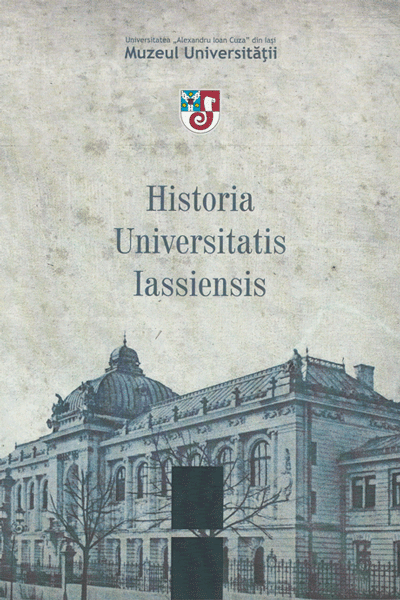Câteva considerații despre acordarea titlului de „doctor honoris causa” al Universității din Iași în perioada interbelică
The awarding of the Doctor Honoris Causa degree at the Iași University in the interwar years. A few remarks
Author(s): Adrian VițalaruSubject(s): History, Cultural history, Diplomatic history, Recent History (1900 till today), Interwar Period (1920 - 1939)
Published by: Editura Universităţii »Alexandru Ioan Cuza« din Iaşi
Keywords: University of Iasi; doctor honoris causa; foreign relations; interwar period;
Summary/Abstract: The present study tackles a topic that hasn’t particularly drawn the specialists’ attention. Our purpose is to present a few data and explanations about some decisions made regarding the awarding of honorary doctorates of the Iași University. To best situate what happened at this university comparisons were made with the other three large universities of Romania (București, Cernăuți and Cluj). The Doctor Honoris Causa is part of the honorary degrees awarded by universities or institutions of higher education to people who made themselves known in certain professional, social or political fields. The first record of an honorary award being given comes from the British area. In the 1470s, the University of Oxford awarded an honorary title to Lionel Woodville, who later became bishop of Salisbury. Afterwards, the practice of awarding honorary titles spread to other instituions of higher education in Europe and outside the European continent. The first Doctor Honoris Causa degrees awarded by Romanian universities date back to the interwar years. As early as 1920, The University of Cernăuți awarded the dr.h.c. degree to three Orthodox officials. The other Romanian university created after WWI, the University of Cluj, awarded the first dr.h.c. degree in the 1927-1928 university year to Abbot Metodie Zavoral from Czechoslovakia for his activity from the war years and the first interwar decade on the path of consolidating the CzechRomanian relations. At the University of Iași the first dr.h.c. was awarded to bishop Dionisie Erhan, proclaimed dr. h. c. on 26th March 1934. Thus, we can see that in the case of the Iași University, as well as in the case of the Universities of Cernăuți and Cluj, it was a member of the clergy that became a dr. h. c. If we make a quantitative analysis of the awarding of the dr. h. c. at the Iași University, we can see that from the 13 degrees, five propositions came for the Faculty of Law, three belonged to the Faculty of Sciences, the Faculties of Letters, and Philosophy and Medicine had two each, while the Faculty of Theology had one. Most of the honorary doctors were French (8), four were Romanian and one was Belgian, which proves, on the one hand, the strong connections that the Iași University had with the francophone world, and the narrower scope of the University’s consolidation of foreign relations by awarding honorary degrees compared to the Universities of Cluj (representatives from 5 states) and Cernăuți (representatives from 5 states). One of the honoris causa doctors died before he received his diploma (Henri Capitant), while Albert Bessemans was no longer given it because of the outbreak of war and the situation of Belgium. As we could see, this degree was given for the first time in Romania by the University of Cernăuți, followed by the University of Cluj, and, starting with 1934, by those of Bucharest and Iași. Thus, the Romanian universities adopted the model in the interwar years, seeking by the proclamation of dr. h. c. to mark certain festive events (the inauguration of the Romanian university in Cernăuți; celebrating a decade from the foundation of the Romanian University in Cluj; 70 years from the foundation of the University of Bucharest and the centenary celebration of the Academia Mihăilenă of Iași), to strengthen foreign bonds and increase its symbolic patrimony.
Journal: Historia Universitatis Iassiensis
- Issue Year: 2014
- Issue No: 05
- Page Range: 63-84
- Page Count: 22
- Language: Romanian

